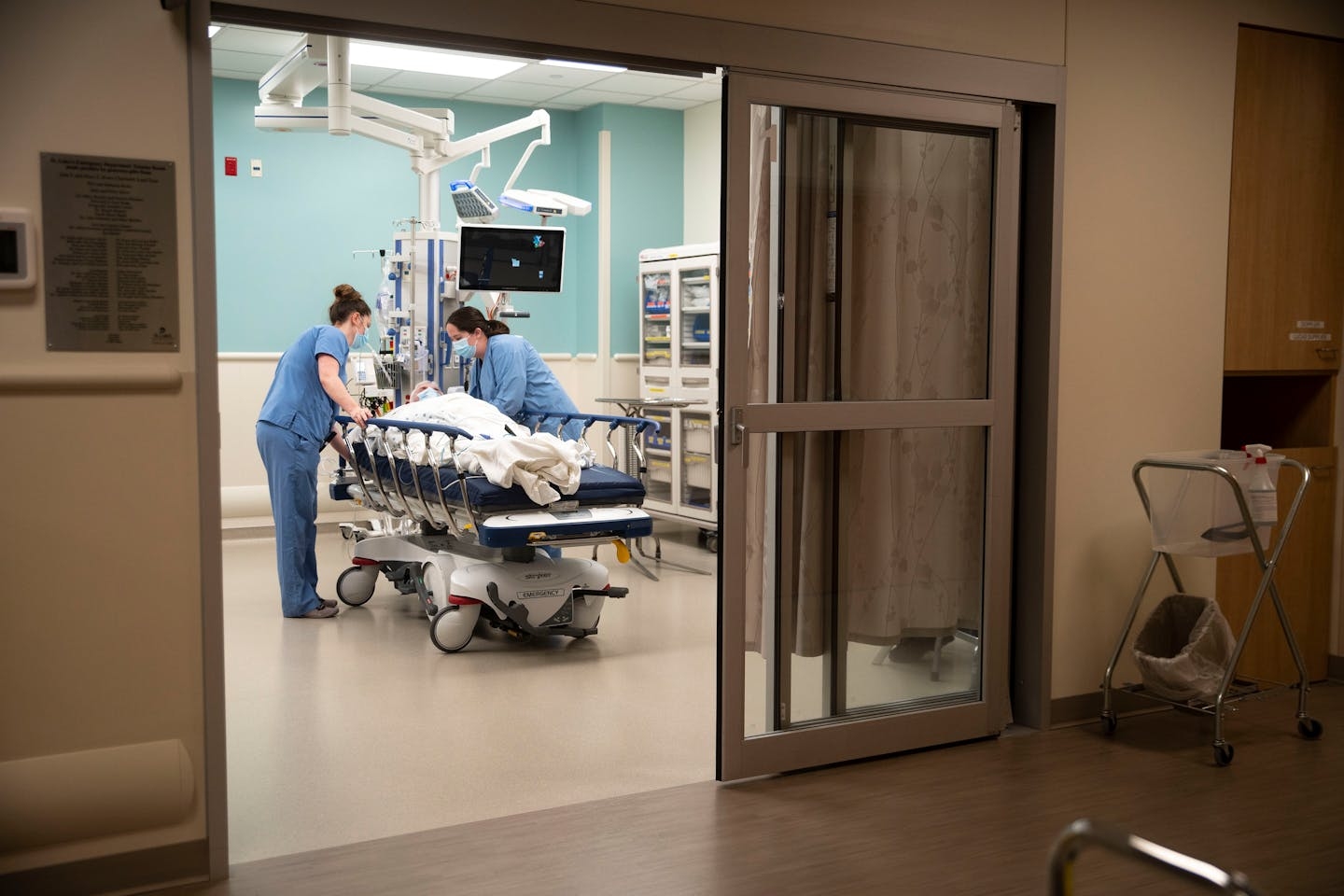Brown: Rural Health Care Workers Shift from ERs to Picket Lines

The Struggle for Recognition in Rural Healthcare
Bria Schurke grew up in Ely, where her family’s healthcare provider was not a doctor but a certified nurse practitioner. This is common in rural areas, where it's challenging to attract physicians and clinics often have to cut costs. Despite this, the quality of care and compassion shown by her certified nurse practitioner inspired Schurke to pursue a career in medicine.
Today, Schurke works as a physician associate (PA) at Essentia Virginia Hospital, where she serves in the emergency room. The pressures of rural healthcare are constant, and she has witnessed firsthand the struggles that come with working in such an environment.
“We are the forgotten part of this country,” said Schurke. “What I see in the ER, the spectrum of the lives people live, we are deep in poverty here. You need people who care not just to get a paycheck but to actually make a change in people’s lives on a day-to-day basis. That’s what we do as PAs and CNPs.”
The pressure intensified recently when Schurke and many of her colleagues joined a picket line. This marked the first day of an ongoing strike by Advanced Practice Providers (APPs) at Essentia Health’s East District, which includes 69 facilities in northern Minnesota and northwest Wisconsin.
These APPs, including certified nurse practitioners and physician associates, voted to unionize with the Minnesota Nurses Association a year ago. However, Essentia declined to negotiate a collective bargaining agreement with the MNA, pending an appeal to the National Labor Relations Board over the union’s desire to form a large bargaining unit. They argued that a strike by such a large union would disrupt an entire region’s healthcare system.
But the union of 430 providers is now on strike. MNA lawyers argue that negotiations can begin while the appeal is pending. This legal dispute lies at the heart of the strike, and it remains unclear how it will end without both sides engaging in dialogue.
“It goes back to wanting to be treated with dignity and respect,” said Schurke. “My colleagues go above and beyond to care for patients. I’ve driven patients home who would have had to walk 45 minutes in the dark. I’ve called them after my shift to make sure they’re OK. I sit with them when I have to share really terrible news. We do all of that. I gowned up many times during COVID to hold hands when someone takes their last breath. We care about people. It just feels so rotten to be ignored.”
Advanced Practice Providers have only recently begun organizing unions. Just last month, physicians, PAs, and CNPs at 60 Allina facilities in Minnesota and Wisconsin became the first such union to conduct an informational picket in Minnesota. They were organized through the Doctors Council Service Employees International Union (SEIU). That union also authorized a strike, but Allina is currently negotiating with them.
Unions face a significant challenge in explaining the differences between nurses, doctors, and all the advanced practice providers (APPs) in between. Staffing problems overlap in complex ways and involve multiple collective bargaining units and internal systems. A rural physician shortage continues to persist, making the issues even more confusing for those not closely following the healthcare system.
This issue hits home for my family. We live near Hibbing, and although we have health insurance, we don’t have a doctor. Our longtime family physician retired two years ago, and we switched to his longtime certified nurse practitioner. However, she left for another clinic earlier this year. There are no providers at our current clinic taking new patients, which means we can only see the on-call provider.
We’re weighing our options for open enrollment next fall. In rural medicine, this kind of chaos is the norm, not the exception.
But I can make one observation. There was no drop-off in care between our beloved longtime doctor and the CNP who took on our family.
APPs provide about 44% of all primary care in Essentia clinics and hospitals, according to Essentia data in MNA statements. Schurke said APPs provide a majority of care in the emergency room.
The union is striking for a voice, not money. But that voice will allow them to seek better pay and working conditions in a future that will also include Medicaid cuts and rising costs for rural providers.
This strike superheats a rising crisis in rural healthcare. Physician shortages and financial pressures cause hospitals and clinics to rely on lower-cost providers like APPs. That’s not a bad thing. But as these professionals grow in number, they’re right to demand a seat at the table in discussions over operations, staffing, and safety.
“We’re here because we want to do our jobs. I care about my patients, and I can speak their language,” said Schurke. “I’m from this community. I think a lot of APPs come back to their home community. We have no ulterior motive. We’re here because we care. We want to be recognized as members of the care team. We want to have constructive dialogue. It can be a civil discussion.”
Here’s what we’re doing in America. For decades, we’ve stalled needed repairs to rural healthcare because those in power say it costs too much. Now, the president and Congress are squeezing people off Medicaid and passing the costs to local hospitals. Healthcare providers remain as stressed as ever, burnt out by long hours and cultural nastiness.
The more this continues, the more labor conflicts will ensue. Delay in solving the problem will become deadly.
Post a Comment for "Brown: Rural Health Care Workers Shift from ERs to Picket Lines"
Post a Comment